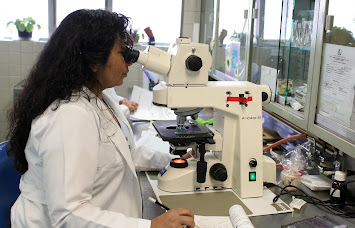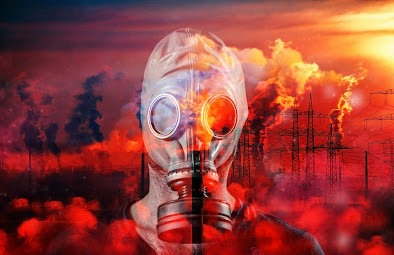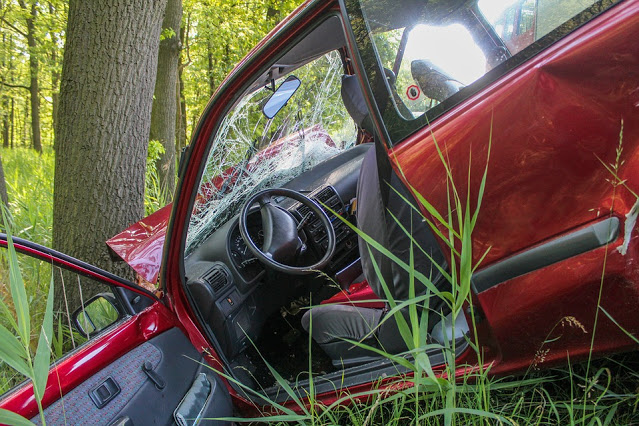Safety Talks: Chemical Safety and Hazard Communication
In our today’s world 90% of the industrial work is related with chemicals, some are more hazardous some are less, we need to work with them to accomplish our task.
Chemical hazards are however classified as:
· Toxic
· Carcinogenic
· Corrosive
· Irritants
· Sensitizers
· Flammable liquids
· Combustible liquids
 |
| A Chemical Lab Scientist having Microscopic View of a Group of Chemicals |
The use of chemicals may lead to physical damage to the human body
and might have chronic effects: a disease which develops over time or acute
effects symptoms that appear or change rapidly there are a variety of ways in
which chemicals can be exposed to the body.
The primary methods of entry can be:
· Inhalation (breathing)
· Absorption (skin contact)
· Ingestion (eating)
· Injection
Actually chemical safety begins with a written hazard communication program which covers how chemical hazards will be addressed on the work site and will include a list of all hazard chemicals present in the workplace all workers who may be exposed to hazardous chemicals should review the program. There are two primary methods for communicating chemical safety information one insuring containers of hazardous chemicals of properly labeled and other is maintaining safety data sheets or SDS which are sources of detailed information on the hazardous chemical labels provide an immediate warning of hazards.
 |
| Pictorial view of a Chemical Manufacturing Plant |
Product manufacturers are required to provide labels on all shipped containers with information including product identifier or product name signal words like danger or warning, hazard statements like fatal if inhaled, hazard pictograms that alert users of the chemical hazards to which they may be exposed. Each pictogram consists of a symbol on a white background framed within a red border and represents a distinct hazard such as health hazard, flammable, corrosive, toxic and irritant.
Precautionary statements like do not eat, drink or smoke when using this product and lastly the name address and phone number of the responsible party. It is important to ensure that all containers on the workplace are clearly labeled so you know exactly what is in the container, a battered or old label might be hard to read. If this is the case make sure to replace the existing label with a new one that includes the product name and general information concerning the hazards of the chemical in addition if you are transferring something from the manufacturer's container to your own container it must be labeled unless you plan to use up all the product and the container will be empty at the end of the day then you do not need to label it for that day.
SDS stands for safety data sheet, safety data sheets serve as the source of detailed information on a particular hazardous chemical. It is required that all product manufacturers and distributors provide safety data sheets to its users if you did not receive an SDS form from your supplier, you should request one or visit their website to download SDS.
SDS contains important information such as:
· Chemicals health hazards
· Flammability
· First-aid and firefighting measures
· Precautions for safe handling and storage,
· Appropriate engineering controls
· Personal protective equipment or PPE
· And emergency procedures
For spills all SDS must be readily accessible to workers when they are on the worksite storing your SDS sheets in a folder in a central location where easily accessible for instance in a pickup vehicle on a construction site is a common practice, SDS can also be kept on an electronic device such as a tablets or computers as long as the workers have immediate access to the information when it is needed, also in the event of a medical emergency hard or physical printed copies of the SDS must be made available immediately to medical team.
 |
| Concept of Men and Chemicals Bonding |
Finally follow the appropriate safe practices when working with any hazardous chemical, familiarize yourself with chemical , hazards on your job site as there may be more than one hazard for each type of product before working with a product read the safety information on the label and the safety data sheet use the proper personal protective equipment such as gloves eye and face protection aprons and respirators. When working with corrosives, an eye wash or shower must be readily available for immediate emergency use if chemical exposure has occurred, the worker should seek the appropriate medical care workers using chemicals should wash thoroughly before eating drinking smoking and leaving the worksite, chemicals are found all over the workplace and some of them are more hazardous than others container labels and safety data sheets will give you information about the hazardous materials with which you work pay close attention to the hazard warnings listed and always follow the manufacturer's safe handling use and storage of all products and chemicals.
P.s. Author has been working with Chemical Manufacturing Industry with over a decade and has physical experience in handling of large variety of chemicals. Please mention in comment box how you are dealing with the Chemicals if you are into the chemical industry or your work requires you to spend your time with chemicals.
x



Your blogs are informative.
ReplyDeleteWorth sharing. Very informative.
ReplyDelete